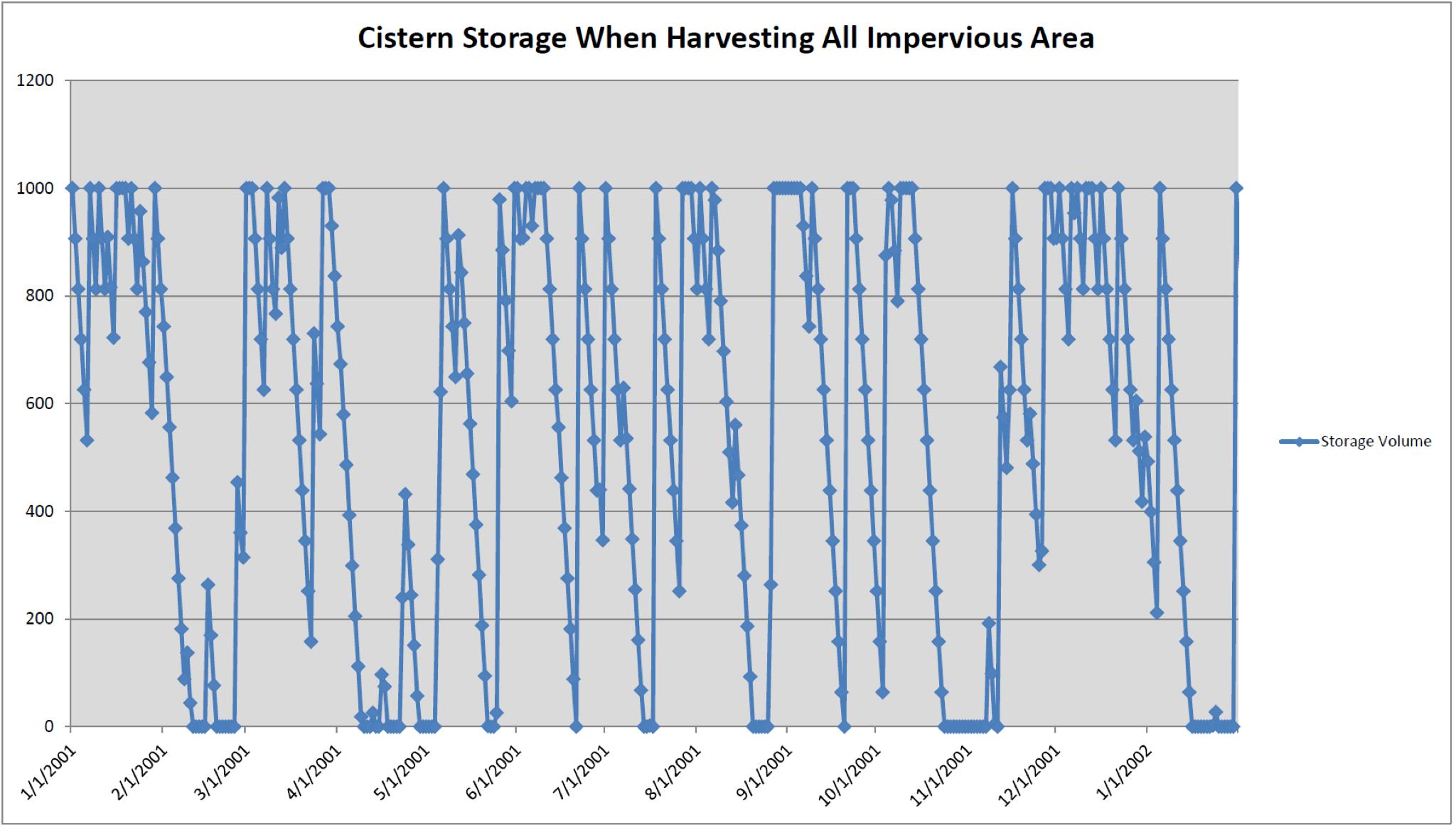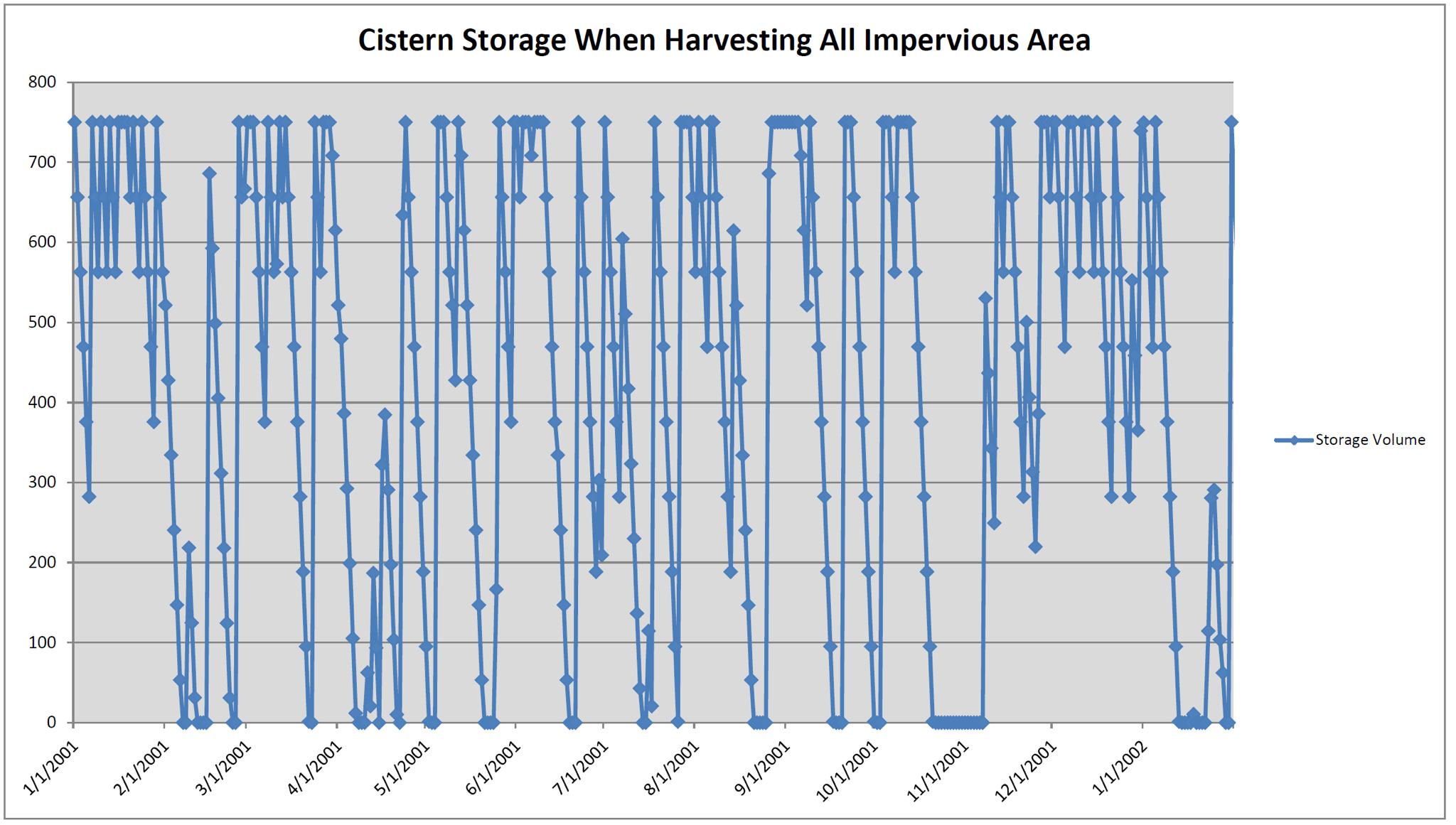[vc_row][vc_column][vc_column_text]With record droughts across the country and rising potable water costs, water harvesting is becoming a more sought after amenity on residential, commercial, and institutional buildings. One of the biggest factors to consider with water harvesting is the return on your investment. This often time become a battle between water supply and water demand.
Supply
Water supply can come from multiple avenues. You have to consider all possible sources in order to shorten the return on investment; i.e. rainwater from rooftops, stormwater from impervious areas, condensate from the air conditioning system and chillers, and grey water from sinks, dishwashers, and washing machines. For the purposes of this blog, we will look at the two easiest captured water sources, rainwater & stormwater, to demonstrate how to increase the rate of our return on investment. For the purposes of this blog, we will assume that we have a site that will supply us with 30,000 SF of rooftop and 42,000 SF of Parking.
Demand
Rainwater and Stormwater can be used for many different applications, although irrigation is often times the primary use of the resource. In order to make your water harvesting system as economical as possible, incorporate simple, easily implementable design strategies to decrease demand; i.e. use native plants in your landscape and limit turf, use smart sensors, or implement a drip irrigation system. For the purposes of this exercise, we will assume we will being using water efficient plants that will only require ½” of irrigation per week and we will need to irrigate 15,000 SF of vegetation.
Water Harvesting Design
Before you think about sizing a water harvesting system, be sure to have identified your supply sources and what you demand will be. Once this is complete, you need to establish the goals for the project. Ask yourself this simple question, what percent reduction do I want to attain? 100%? 70%? 50%? Also, consider how long your landscaping can go without irrigation. This is important because we often times tend to think our plants have to be watered once a week. Is this true or can they survive for a month or more without being irrigated? Determining this early on will help you fine tune the sizing requirements of your system.
Below is a chart that shows the analysis of what we can expect our rainfall capture history of a two acre site in Houston TX. As mentioned above, we will assume that this site is equipped with a 4 story building with a rooftop footprint of 30,000SF, a landscape footprint of 15,000SF and a parking lot footprint of 42,000 SF. This chart is based on daily historical rainfall history at Houston’s Hobby Airport (attaining rainfall data is simple and can typically be gathered from any airport system) and gives us a look at the past 10 years of rainfall patterns to help us predict the next ten years for the purpose of effectively sizing a rainwater harvesting system.
Base Line: Rainwater Harvesting
This is a look at capturing rooftop runoff only. On buildings in excess of 3 stories, water filtration isn’t a must, although it is always a good idea to put a simple form of filtration such as sediment and debris screens on the gutters. For building shorter than 3 stories, be certain to use proper filtration to keep air born sediment and other debris out of the system. Both mechanical and biological filtration can be considered.
If landscaped properly, our goal is going to be that our system is only full 80% of the time. If proper vegetation is used, this will allow us to reduce potable water demand by 100% requiring no potable water to be used.


As you can see in the chart above, using a 7,500 gallon cistern, the tank would only be empty 18% of the time. If you look at the line graph, in the year 2001, the tank was never empty for a period longer than 30 days. With this design, we break even in less than 7 years and have a yearly cost savings of $1,560 annually.
Improving Efficiency: Rainwater + Stormwater Harvesting
Storing stormwater that runs off of a parking lot is often time frowned upon due to contaminates that come off of the vehicles that use them. If done properly using next generation Low Impact Development strategies, this is a problem of the past. The FocalPoint Biofiltration System by Convergent Water Technologies is the simplest, most effective way to remove pollutants in a truly sustainable manor. One thing to note, when using LID technologies to purify water, always incorporate overflows and be sure those overflows go directly to the storm sewer and away from the water harvesting system.


By adding stormwater to the system, we were able to decrease the size of the rainwater harvesting system by 25%, thus reducing costs that result in a less than 5 year return on investment. Remember, the most important thing with capturing pavement runoff is proper filtration. Look to the entire Low Impact Development tool kit for ideas.
Summary
Although this is only one example of the efficiencies associated with water harvesting, and site and geological conditions vary, considering the things in this blog will help you design and implement more successful water harvesting systems in the future.[/vc_column_text][/vc_column][/vc_row]
